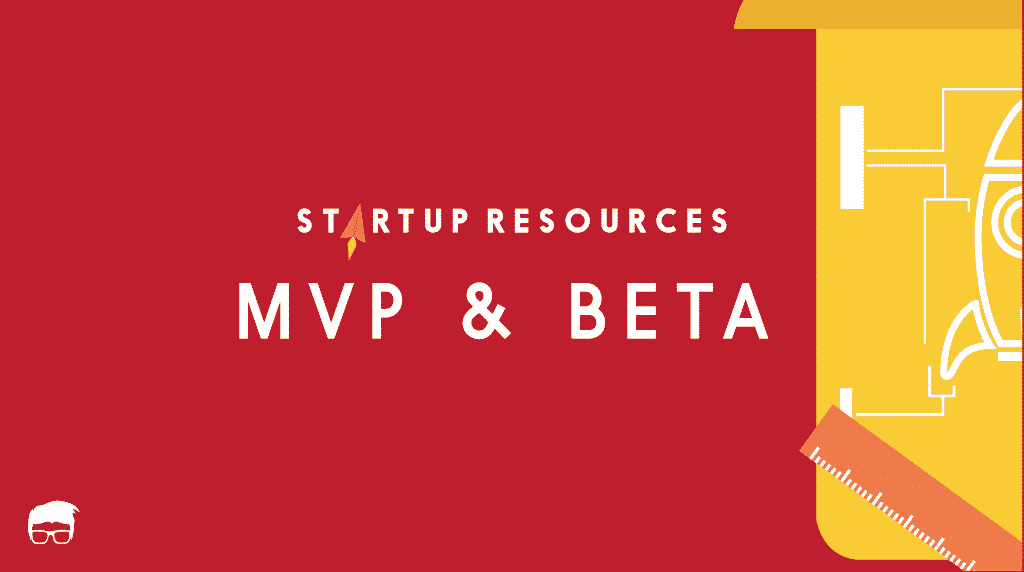The 12 Best MVP & Beta Tools For Startups
MVP (Minimum Viable Product) is a basic version of a product with just the core features. Companies make MVPs to test their product ideas quickly and cheaply. They want to see if people like the product before spending lots of time and money on it, which helps them avoid making something that nobody wants.
Making a good MVP isn't easy though. It's hard to decide what features to include and what to leave out. You need to make something simple but still useful. That’s why we’ve created a list of the 12 best MVP tools that can help you design and test your MVP effectively.
Rundown
- For no-code MVP development: Bubble, "A no-code platform that allows anyone to build fully functional web applications without writing code."
- For low-code MVP development: Mendix, "A platform that enables fast application development with minimal coding, perfect for creating MVPs quickly and efficiently."
- For simple mobile app development: Thunkable, "An intuitive drag-and-drop tool that lets users build mobile apps without coding knowledge, ideal for fast MVP creation."
- For no-code automation: Make, “Build and automate workflows, connect apps without writing any code.”
- For website development: Webflow, "Combines design, CMS, and hosting, allowing users to develop professional websites for MVPs without coding."
- For MVP planning: Productboard, "A tool for product management, helping teams prioritise features and brainstorm on what to build for their MVP."
- To validate your product idea: Maze, "Provides a platform for rapid remote testing to validate ideas and gather user feedback efficiently."
- Best for creating simple product mockups: Balsamiq, "A rapid wireframing tool that allows teams to sketch out user interfaces quickly and easily."
- Best for UI/UX designs: Figma, "A powerful design tool that lets you create, collaborate, and share user experience designs in real-time."
- For user feedback and surveys: Typeform, "A user-friendly platform that creates engaging and interactive surveys, perfect for collecting feedback on MVPs."
- To analyse user behaviour:Hotjar, "Offers heatmaps, session recordings, and surveys to help understand how users interact with your product."
- To create and test landing pages for product ideas: Unbounce, “Build functional landing pages without coding knowledge and create prototypes.”
Recommended MVP & Beta Tools
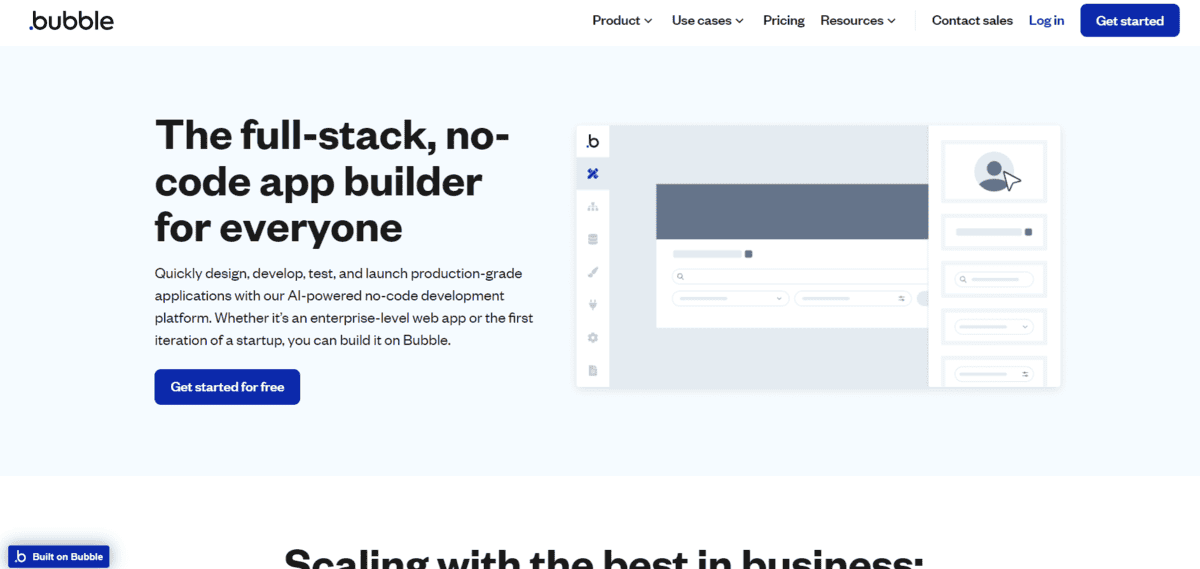
For no-code MVP development
Bubble is for anyone who wants to create applications but lacks coding skills. With this tool, you can quickly design, build, and launch fully functional web apps for your MVPs using a simple drag-and-drop interface. There are many pre-made templates and components that you can customise so you don’t have to start completely from scratch. The platform also has AI-powered features that can guide you through the development process and even generate page designs based on your descriptions.
It’s a useful tool for creating a minimum viable product (MVP) quickly without the need for any programming skills. With Bubble,
- You can create custom user interfaces by dragging and dropping elements like text, buttons, and images.
- You can set up workflows to define how your app works in response to user actions.
- You can also create and manage a database directly within Bubble to store user information, product details, or any other data your app needs.
- It makes sure your application looks good and works well on any device, whether it’s a phone, tablet, or desktop.
While Bubble is a great MVP tool for non-coders, it has a few limitations to consider. Apps built on Bubble might not match the speed and performance of those coded from scratch. Also, even though it's easy to use, it can take time for new users to learn all its features.
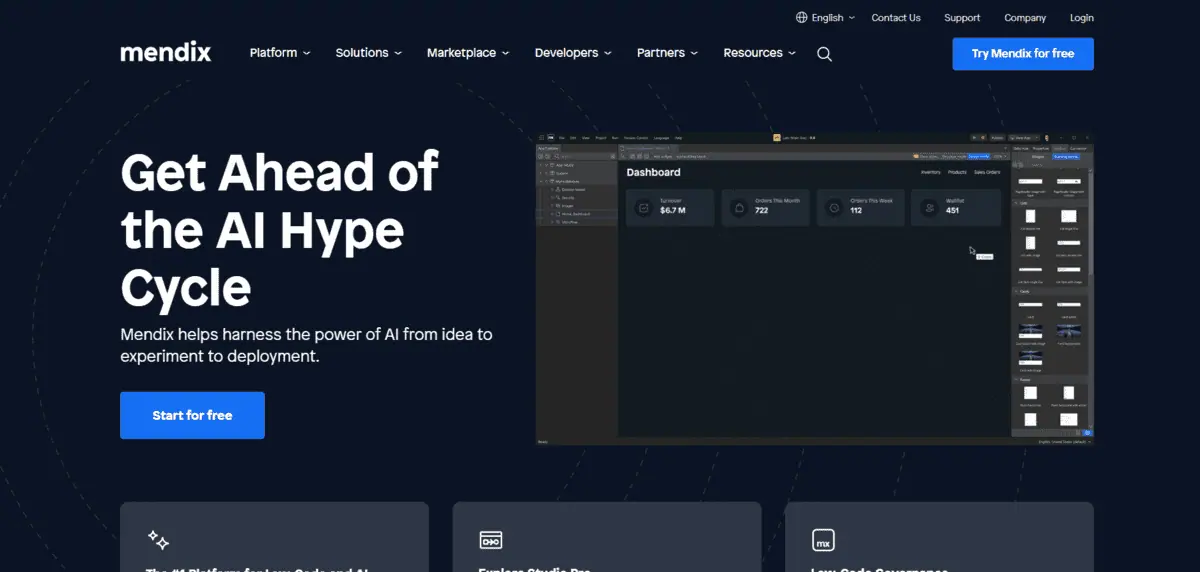
For low-code MVP development
If you're looking to develop and deploy software applications quickly with very minimal coding required, Mendix might be the perfect tool for you. With this tool, you don’t have to do all the coding yourself; it has a drag-and-drop interface to speed up the process. You can also use several templates and widgets like buttons, forms and data tables to save more time. It makes the development process up to seven times faster than traditional coding methods. This means you can get your MVP to market much quicker, and gather user feedback to refine your product sooner.
- Multiple team members can work on a project simultaneously. This makes team collaboration easier and boosts the development process.
- You don’t have to focus on creating designs, there are many pre-made templates available for your use.
- You can also use AI suggestions to improve your app’s performance and functionality.
- You can deploy your application directly to the cloud from Mendix.
- You can also connect your app with other systems and services using API.
Mendix is a helpful tool for quickly developing MVPs with little coding required, but it still has some downsides. It could be pricey for small startups or individual developers, and the customisation options can be limited if you want to make a fully custom application.
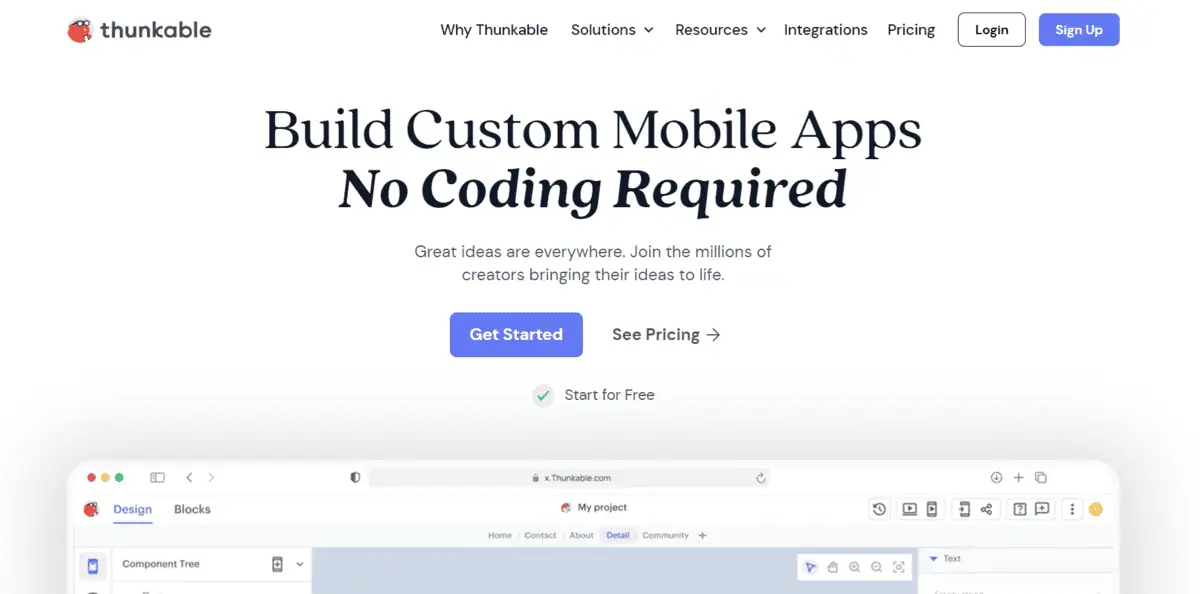
For simple mobile app development
Thunkable is perfect for those who want to create simple mobile app MVPs without needing any technical skills. With this tool, you can create apps for both iPhone and Android. Instead of writing complex code, you drag and drop different elements onto your canvas. These parts are called "visual building blocks" and include elements like buttons, text boxes, or image displays. You can easily customise these pre-made elements or use a template. The platform lets you test your ideas quickly and make changes as you go.
With Thunkable,
- You can create app screens and add components like buttons, images, and text boxes by dragging them onto your canvas.
- You can test your final product in real time on your device as you build it.
- There’s a variety of pre-built components that you can use for common app features like navigation, media playback, and user input.
- You can also add complex logic to your apps using a visual blocks-based coding language.
Thunkable is a great MVP tool, but it's not without any limitations. While it’s easier than traditional coding, block-based logic can still be challenging for complete beginners. It can take you some time to understand how this tool works.
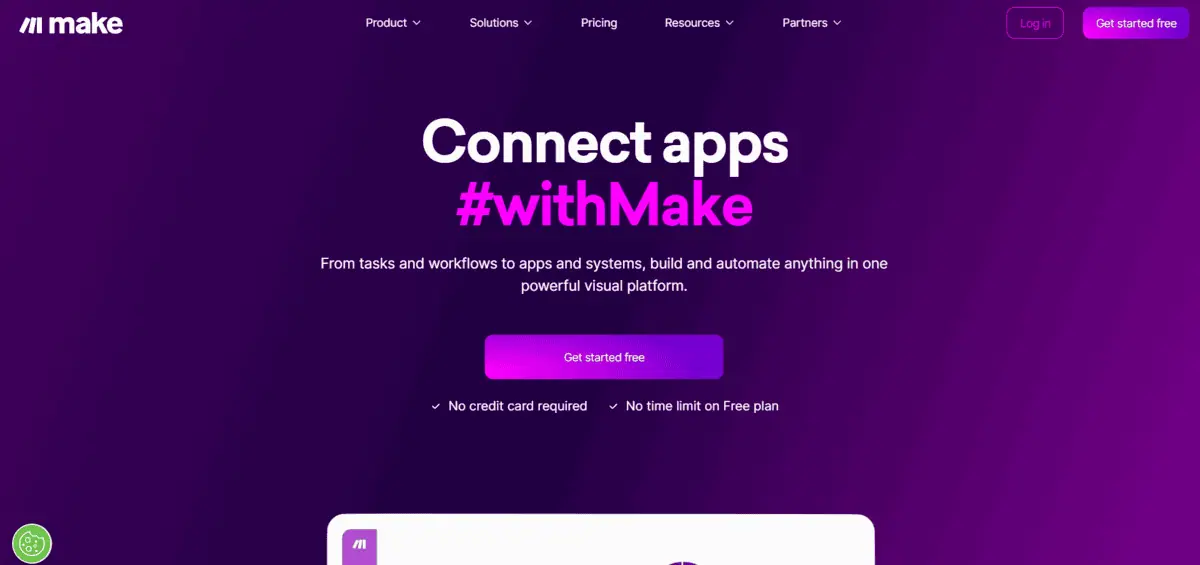
For no-code automation
Make could be your go-to tool if you want to automate workflows and connect different apps without any coding. With this tool, you can create workflows that link various apps and services together which can be useful in MVP development. For example, if you're building an MVP for an e-commerce site, you could use Make to automatically add new customers to your mailing list or send order confirmations. You can do this by dragging and dropping icons of different apps and actions, then connecting them in the order you want things to happen. Make offers many pre-made templates to help you get started, which you can adjust to fit your needs.
- You can connect to hundreds of popular apps like Google Sheets, Slack, and Trello.
- It can integrate with the tools you already use, making sure that all your apps work together smoothly.
- You can automate specific tasks by setting up triggers (that start a workflow) and actions (that happen as a result).
- Make can process and transfer data in real time between connected apps to keep everything synchronised across all your platforms.
Make is undoubtedly a great tool for creating automated workflows but like any other tool, it also has some limitations. You might find setting up complex workflows challenging, especially if you’re a new user. If you want access to advanced features, you’ll have to opt for a paid plan. For free users, there are very limited support options.
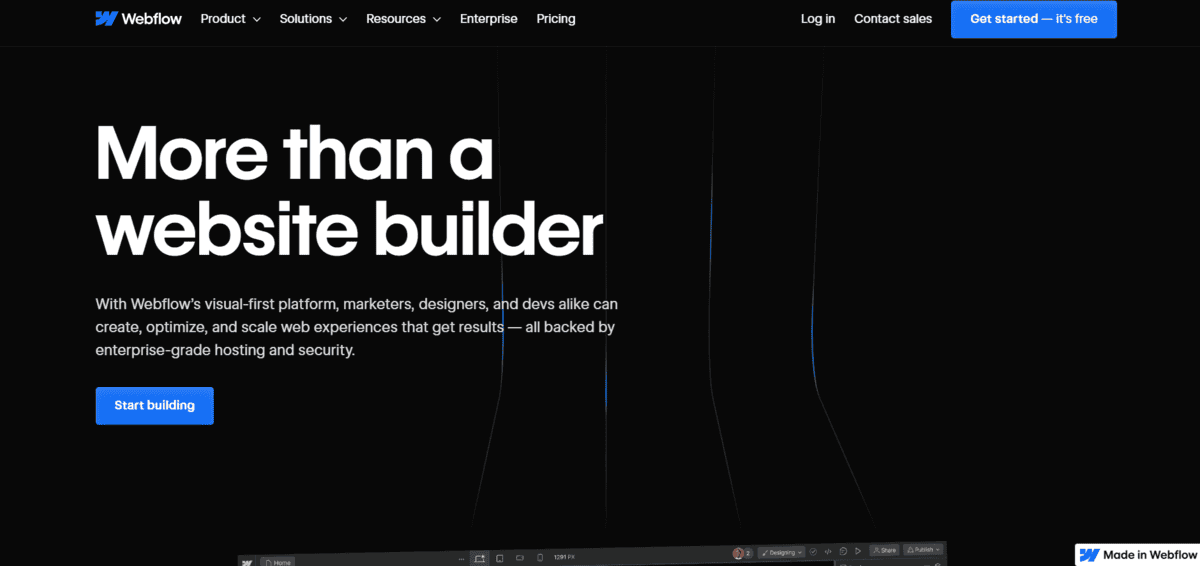
For website development
Webflow
Webflow could be your go-to tool if you want to create a high-quality, professional-looking website for your MVP without any coding. You can easily design your website by simply dragging and dropping elements. It lets you design, manage content, and host your website all in one place. You can also add your own custom animations and interactions.
It has many useful features to offer:
- Webflow’s visual designer lets you create complex layouts and designs just by dragging and dropping elements. You can easily update text, images, and more without messing with the design.
- It helps you create sites that look great on any device. Webflow automatically adjusts your design for mobile, tablet, and desktop views.
- Once your site is ready, Webflow hosts it for you. You don’t have to worry about finding a separate hosting service.
Webflow is a great website design tool for your MVP, but it does have some limitations to consider. While it offers many useful features, it might take you some time to learn how it works. Also, the premium plans may be costly for small startups or individual users.
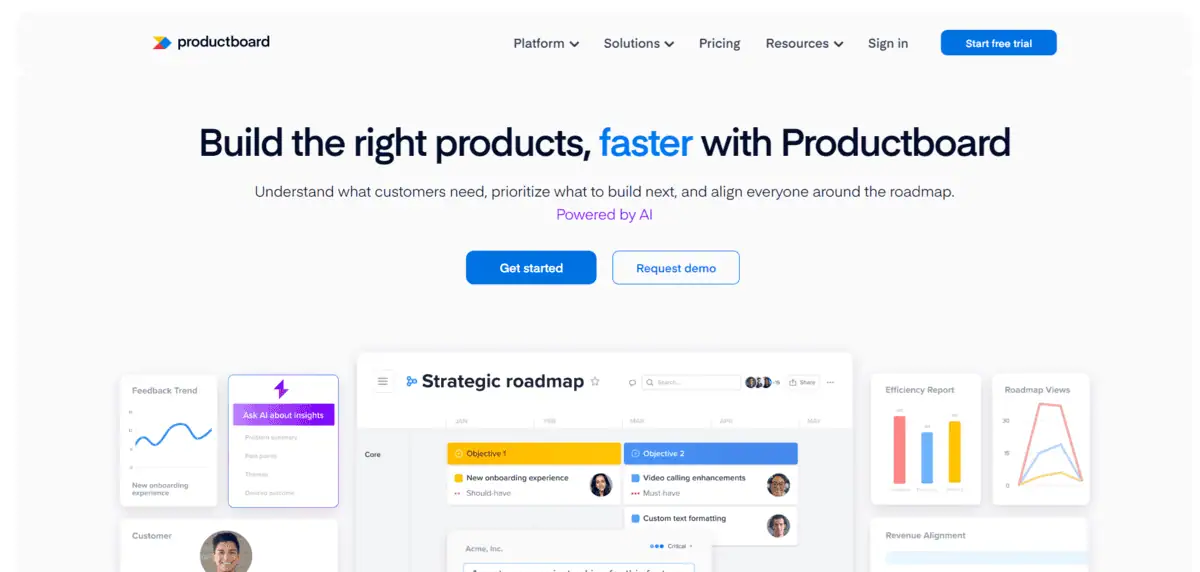
For MVP planning
If you need a tool to help plan and prioritise features for your MVP, Productboard is a great choice. It helps you collect customer feedback, decide what's most important, and create a roadmap that matches what users really want. By using Productboard, you can focus on building the features that matter most, which leads to a better MVP.
Productboard offers several features and utilities like,
- It helps you get insights to prioritise and rank your product’s features based on user needs, market trends, and business goals.
- You can collect user feedback from various sources, such as email, surveys, etc., and centralise it in one place. This helps you ensure that the product meets user needs and expectations.
- You can also create visual roadmaps that outline your product’s development plan and share them with stakeholders easily.
- It can integrate with other project management tools like Jira, Trello, and Slack, helping you sync tasks and communications across platforms.
Productboard is a great tool for product management, but it can take some time to fully understand its features. The pricing can also be a bit high for small teams or anyone with a limited budget.
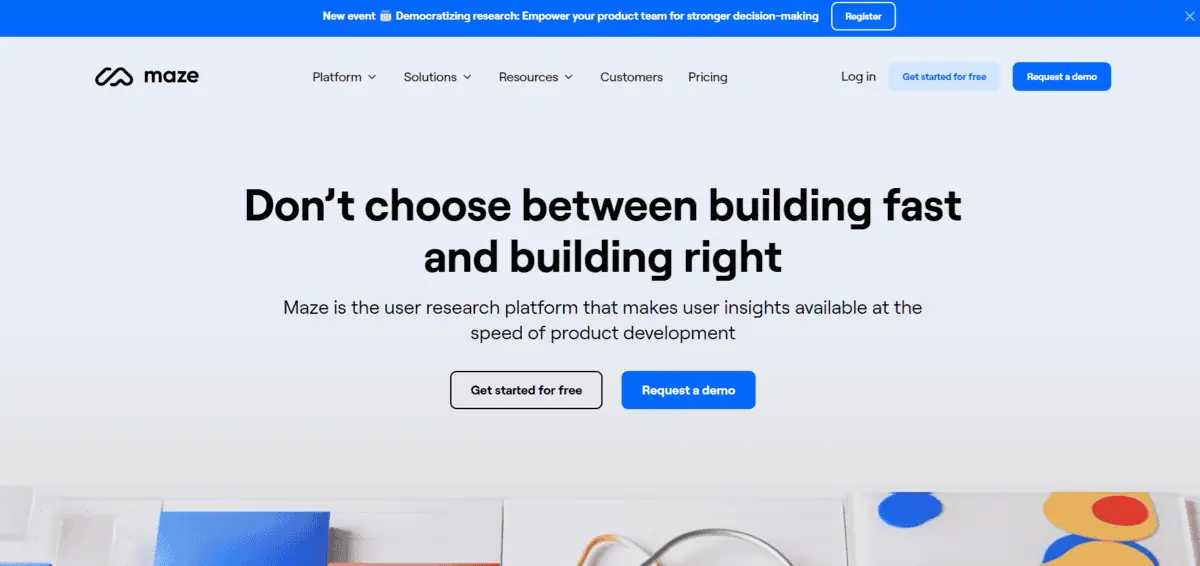
To validate your product idea
If you need to validate your product idea quickly and gather user feedback efficiently, Maze is the tool for you. With this tool, you can make your product idea available to real users for testing. You can see how people interact with your MVP and get actional feedback to improve your product. It lets you create surveys as well.
- With Maze, you can make tests quickly and get user feedback in hours instead of days. This helps you keep up with fast development.
- You can easily design and share tests, even if you're not a UX expert.
- You can import your designs from tools like Figma, Sketch, and Adobe XD.
- You can also collect user opinions through surveys and learn what users like and don't like directly from their answers.
- You can see where users click, scroll, and interact with your design. This helps you know which parts get attention and which don't.
- You can also get insights with live data. You can watch how users do on your tests and use this info to make better choices.
Maze is a great tool for validating product ideas, but it can be on the pricier side for small startups or individual users. It also requires your design prototypes to conduct tests.
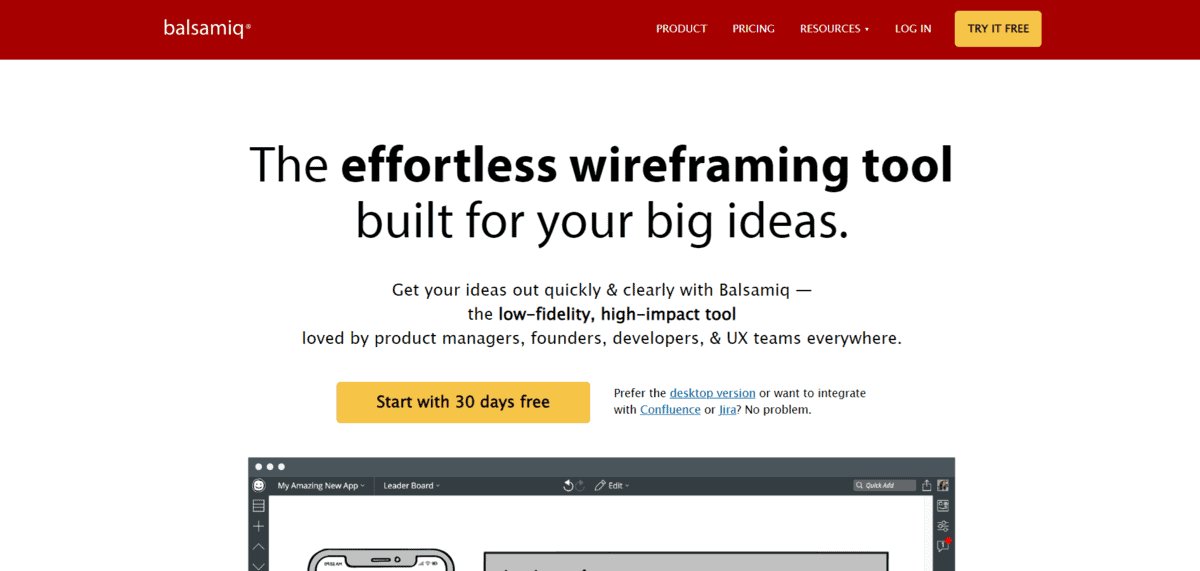
Best for creating simple product mockups
Balsamiq is for you if you want to quickly sketch out user interfaces and create simple product mockups. It’s perfect for brainstorming sessions and early-stage design. You can create wireframes by dragging and dropping UI elements onto your canvas. It has a library of pre-made UI elements like buttons, menus, forms, etc. that you can use. You can also gather feedback on your mockups.
- You can design the basic structure of your interface without getting caught up in visual details. The sketch-like style helps people focus on how it works, not how it looks.
- You can easily work with others on your designs. Share your wireframes, add comments, and edit together in real time.
- You can convert your wireframes into different file types, like images or PDFs, which makes it easy to use them in presentations or documents.
- You can start with pre-made templates for common layouts. These give you a head start and help you design faster.
While Balsamiq is a great tool that can help you develop your MVPs, it’s not suitable for complex and highly detailed design work. It also lacks advanced features that you might need if you’re working on a big project.
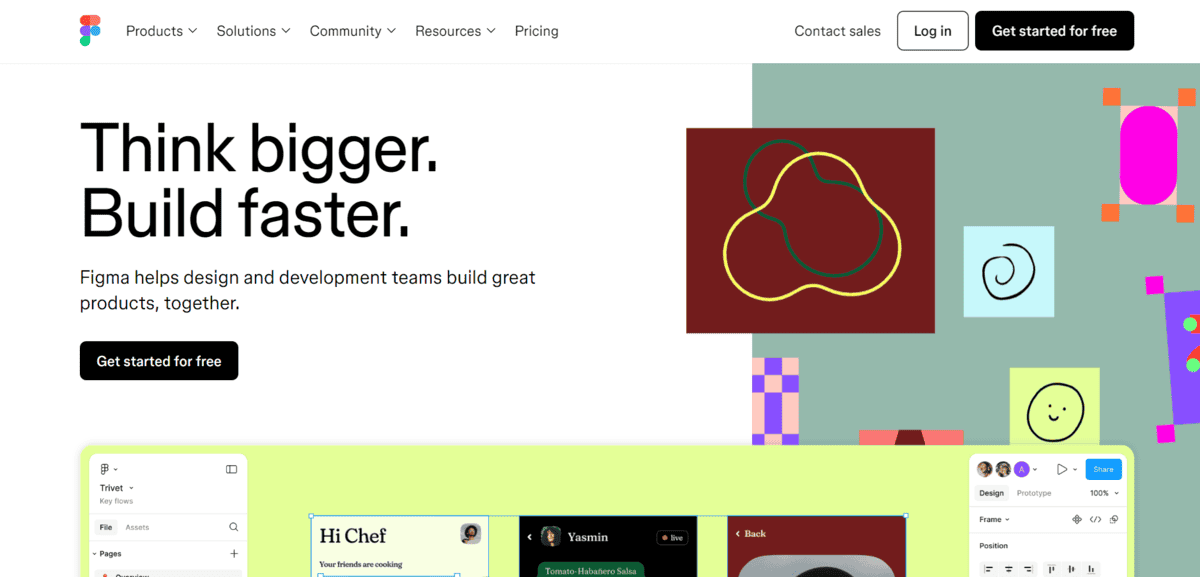
Best for UI/UX designs
Figma is the perfect choice for those who need a tool to create, collaborate on, and share high-quality UX designs effortlessly. You can easily create designs for websites, apps, or any other digital product. Figma lets multiple people work on the same design at the same time, so it’s great for team collaboration as well. You can also create responsive designs for various screen sizes like phones, tablets or desktops and get pre-made components to speed up your work.
Figma offers many features and utilities to its users like:
- You can create detailed designs and interactive prototypes in one tool. Design how things look and link them to show how users would use them.
- It’s cloud-based so your work is always saved and you can access it from any device with internet. You don't have to worry about file versions or losing work.
- You can reuse design elements with components and libraries. This keeps your designs consistent and makes your work faster.
- Figma tracks changes for you. You can easily see what's changed and go back to older versions, so you don't lose important work.
- You can export your designs in different formats (PNG, SVG, PDF) to use in presentations, development, or other applications.
Figma is a great design tool for your MVP development; however, it has some limitations. To work properly, you need a stable internet connection at all times. Also, it might be a bit on the pricier side especially if you’re on a tight budget.
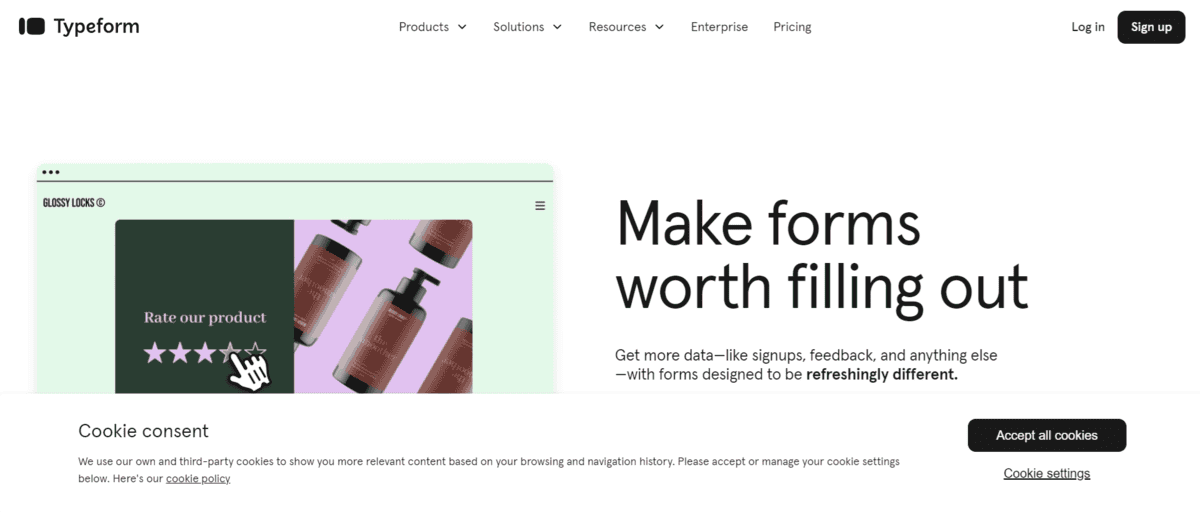
For user feedback and surveys
Typeform is for you if you need to create engaging surveys and collect user feedback for your MVP. With this tool, you can create interactive surveys and forms to understand user preferences, validate product ideas, and make data-driven decisions. Typeform shows one question at a time, so the surveys feel more like conversations. It keeps respondents interested and willing to complete them.
You can start with ready-made survey templates and change them to fit your needs or just create a completely new one. Other than that,
- You can also make more personalised surveys that change based on how people answer. This means respondents see different questions based on their previous answers, making the survey more relevant to them.
- You can embed these surveys directly into your website, emails, or social media platforms, making it easy for users to access and complete them.
- You can see responses in real time. This allows you to quickly analyse the feedback and make necessary adjustments to your MVP.
- Typeform can integrate with other tools like Google Sheets, Mailchimp, and Slack. This helps automate your workflow and keeps all your data in sync.
- You can also add images, videos, and GIFs to your surveys to make them more engaging and visually appealing.
Typeform is a great tool to collect user feedback on MVPs but it’s not without any limitations. If you want to access its advanced features you’ll have to opt for a paid plan, which might be pricey if you’re on a limited budget. Some features like logic jumps can take some time to understand.
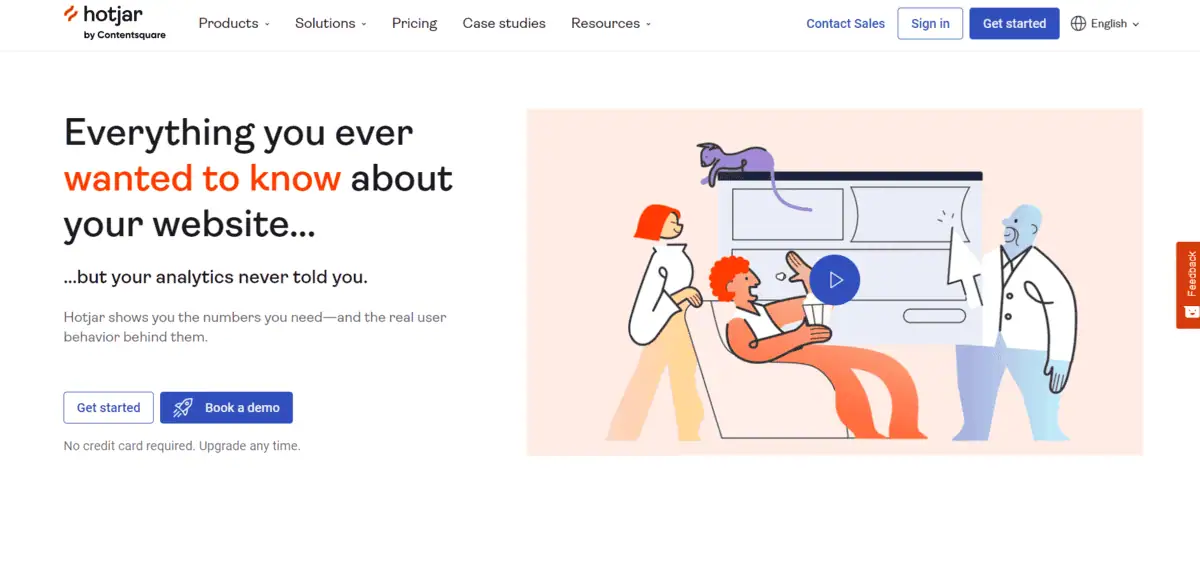
To analyse user behaviour
Hotjar is for product managers, UX designers, or anyone who wants to understand user behaviour and improve their product's user experience. It lets you see exactly how users interact with your product. It offers a suite of tools that gives you deep insights into user behaviour. By using heatmaps, session recordings, and surveys, you can see how users navigate your site, what they click on, and where they get stuck. With all this info, you can make your product better and easier to use.
Hotjar offers many useful features like:
- With heatmaps, you can see where users click, move, and scroll on your site. This visual representation helps you see which parts of your page grab attention and which parts get ignored.
- You can record user sessions to watch how they interact with your site. This feature lets you see their journey, from landing on your site to navigating through different pages.
- You can also Create on-site surveys and feedback polls to gather direct input from users. This helps you understand their needs, preferences, and pain points.
- You can track where users drop off in the conversion process. This helps identify and fix any issues that prevent users from completing actions, like making a purchase or signing up.
Like any other tool, Hotjar also has some limitations you should consider. Its free and lower-tier plans limit data collection and advanced features, which might not be convenient for larger teams or complex projects.
Recording user sessions can raise privacy concerns, so make sure you handle user data responsibly and comply with privacy regulations. Also, adding the tracking code might slightly impact your site’s performance, especially if you have a lot of traffic.
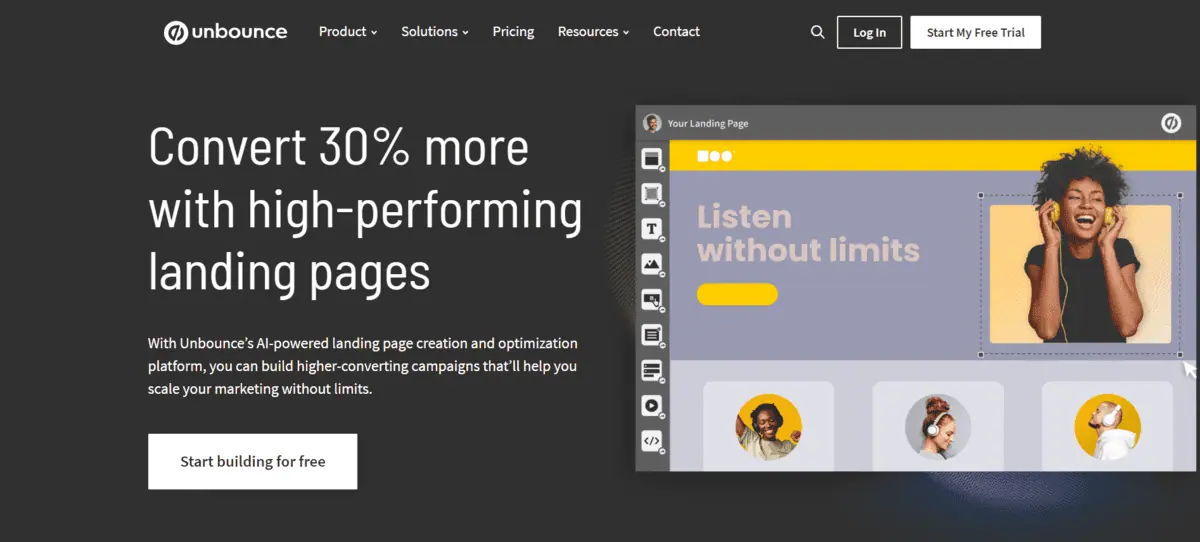
To create and test landing pages for product ideas
If you're looking to validate product ideas and drive conversions through compelling landing pages, Unbounce is the tool for you. With this tool, you can build functional, visually appealing landing pages for your MVP without needing any coding skills. It’s perfect for those who want to create prototypes and test different versions of their pages to see what works best. There are several design templates that you can use or create a new one with a simple drag-and-drop builder.
- You can test different versions of your landing pages to see which one performs better. This helps improve your pages for higher conversions.
- You can create pop-ups and sticky bars to capture leads and promote special offers. These can be triggered based on user behaviour, making them more effective.
- Unbounce can be integrated with popular marketing tools like Mailchimp, HubSpot, and Google Analytics. This makes it easy to sync your leads and track performance.
- Your landing pages will look great on all devices. Unbounce automatically optimises your mobile pages, so you don't miss out on potential conversions.
While Unbounce is a great tool for creating landing pages, it has certain limitations. It can be expensive for new or small businesses, especially if you need advanced features or want to handle lots of visitors.
Although it's easy to use, it might take some time to learn all its features. Also, while you can easily change the ready-made designs, you might find it limiting if you want to create very unique or complex page layouts.
